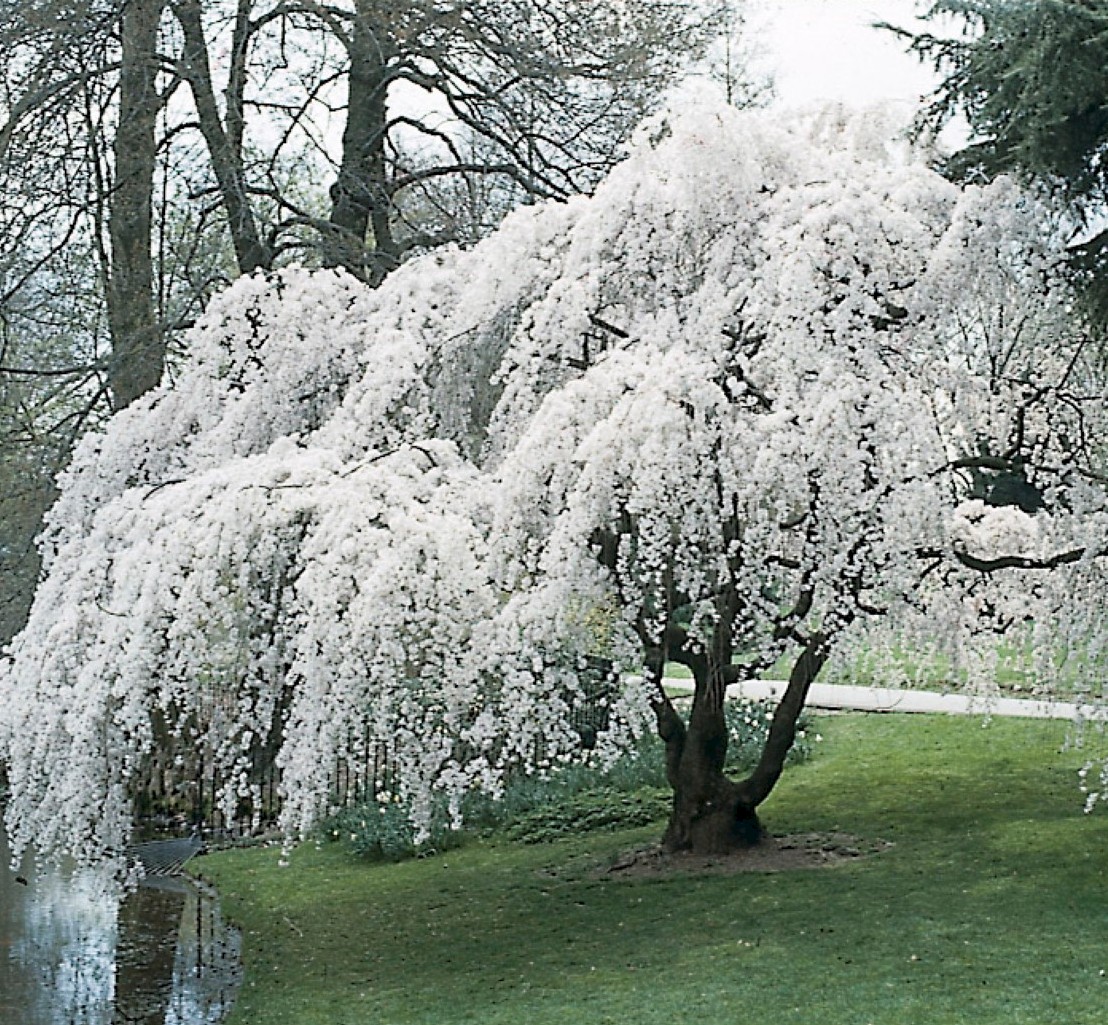
Prunus ×subhirtella 'Pendula' Prunus ×subhirtella 'Pendula' Van den
Prunus subhirtella 'Pendula': Weeping Higan Cherry 1. Edward F. Gilman and Dennis G. Watson 2. Introduction. Weeping Higan Cherry grows 20 to 30 feet tall and spreads 15 to 25 feet in a graceful weeping habit. Leaves stay glossy green throughout the summer and into the fall when they turn a vivid yellow before leaving the tree bare in winter.

Prunus subhirtella 'Pendula' from Neil Vanderkruk Holdings Inc.
Weeping cherry trees add an instant touch of artistry to the landscape. In spring the tree produces a cascade of fragrant pink blooms. The soft form adds a relaxing, fluid shape in the summer garden. In winter, the weeping branches become sculpture-like when covered with a layer of snow. Weeping cherry produces small, edible fruits but they are not sweet and flavorful like other cherries. The.
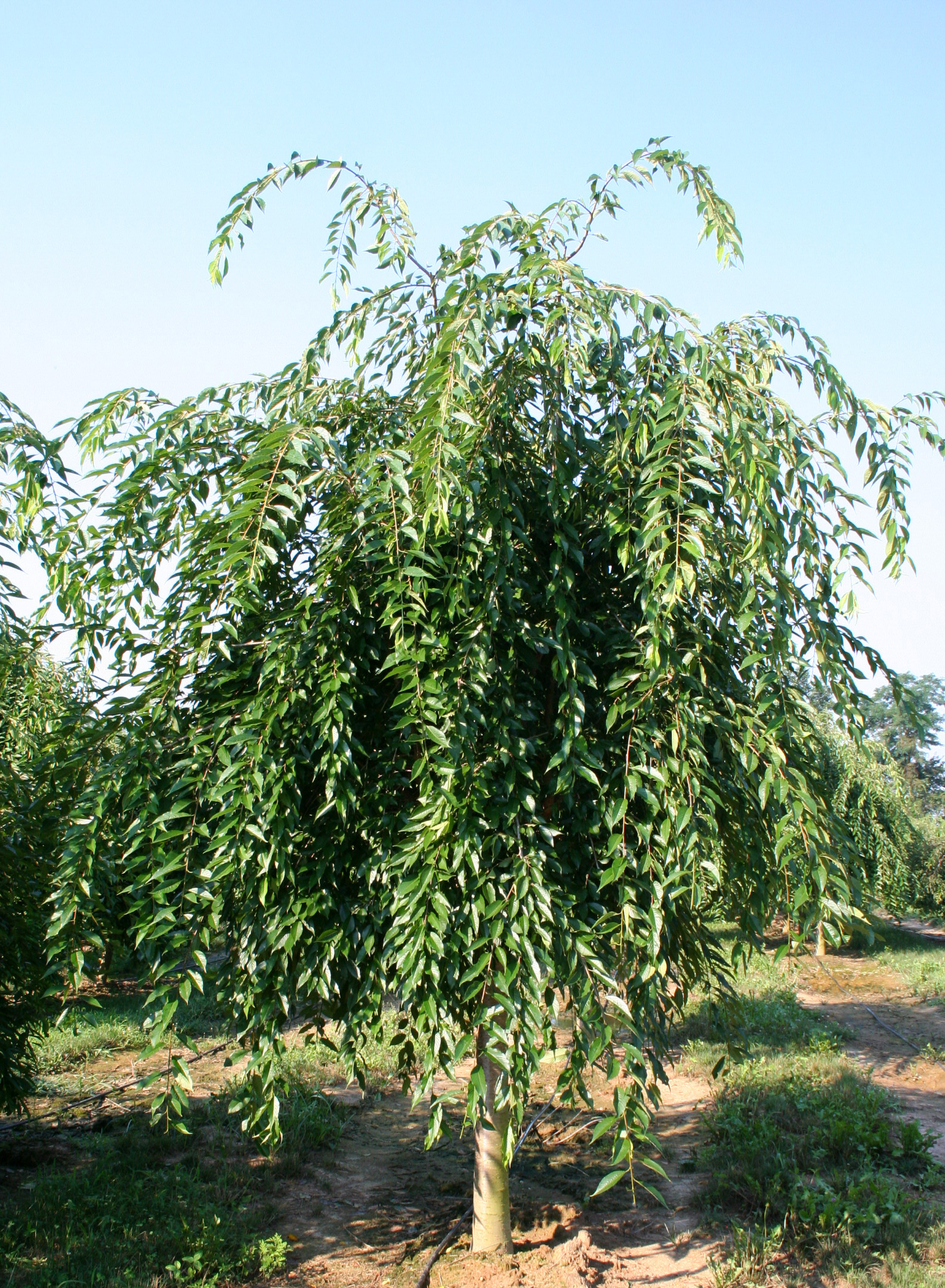
Prunus subhirtella Pendula 2 Moon Nurseries
Prunus subhirtella var. pendula; Phonetic Spelling PROO-nis sub-HIR-tel-uh Description. Weeping Higan Cherry is a weeping flowering cherry tree from Japan. It is deciduous, grafted, and grows up to 40 feet tall and wide with pendulous branches that are ascending, slender, pendulous, scabrate, and have double pink flowers in umbrels of 2-5.

Prunus subhirtella 'Pendula Rubra', Hängende Winterkirsche 'Pendula Rubra'
The leaves of the Weeping Higan Cherry are simple serrated leaves of about 10 to 20 cm in length, with a deep green color on the top and a paler green color on the bottom. The flowers of the Weeping Higan Cherry are small in size, with a diameter between 1 and 2 cm, consist of five light pink or white petals and five dark pink sepals organized.

Prunus subhirtella Pendula Rubra Weeping Flowering Cherry Tree
Foliage: The leaves of Prunus pendula are small and simple, having a lanceolate shape and a toothed margin. They emerge a bronze color in spring, turning green as they mature in summer, and finally adopting yellow-orange hues in autumn. Hardiness: Weeping Cherry is quite robust, tolerating temperatures within USDA hardiness zones 6 to 8.
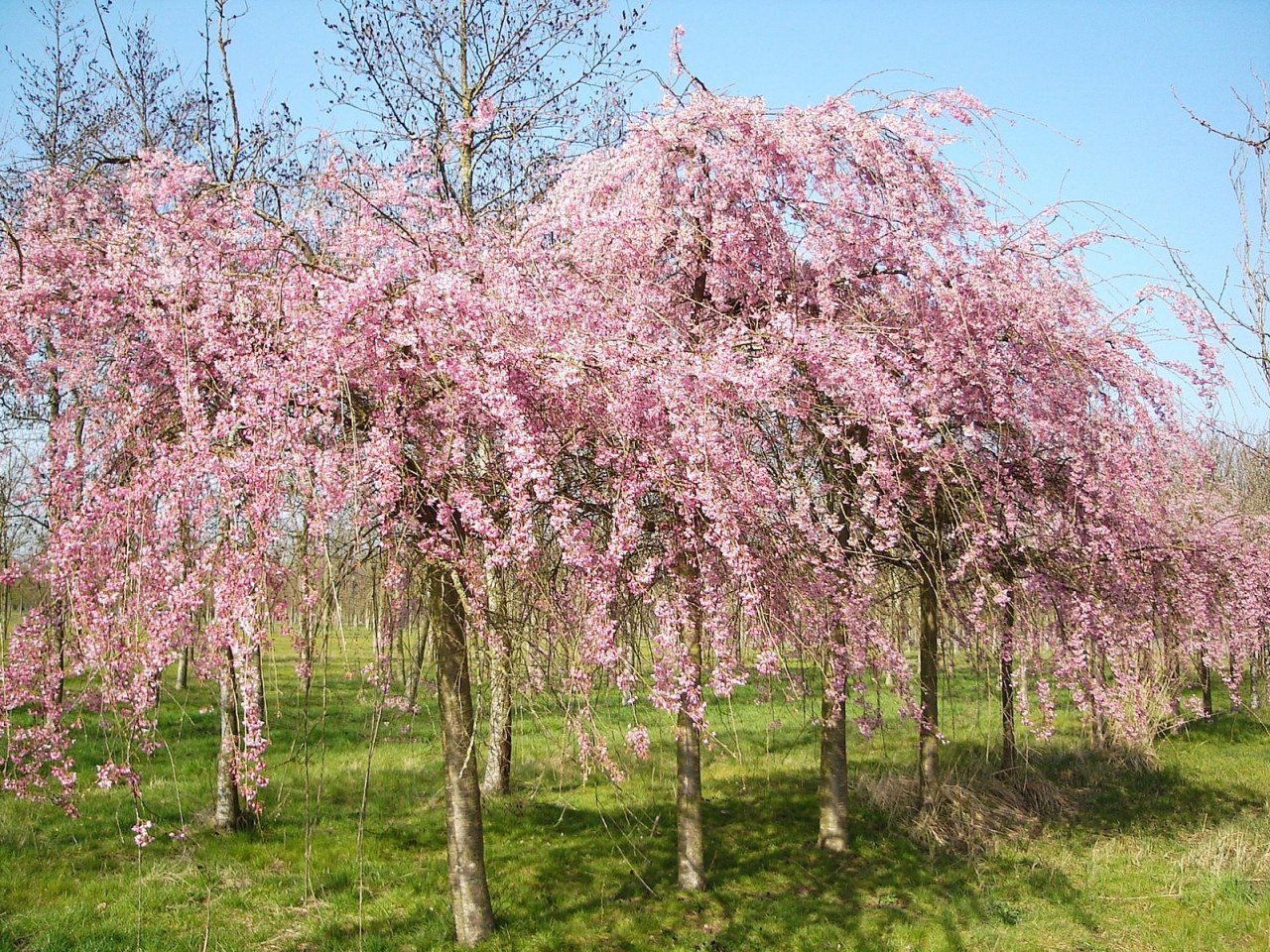
Cerisier pleureur PRUNUS subhirtella Pendula Thuilleaux
Free Shipping Available. Buy Prunus Subhirtella Pendula on ebay. Money Back Guarantee!

Prunus ×subhirtella 'Pendula' Treursierkers (cv) Van den Berk
Prunus x subhirtella, commonly known as the Higan cherry, Spring cherry or Rosebud cherry, is a hybrid species of flowering cherry tree native to Japan. Habit and Size: Depending on the cultivar, it exhibits a graceful upright branching, broad and spreading habit, or a rounded or weeping habit. The tree typically reaches a height of 20 to 30.
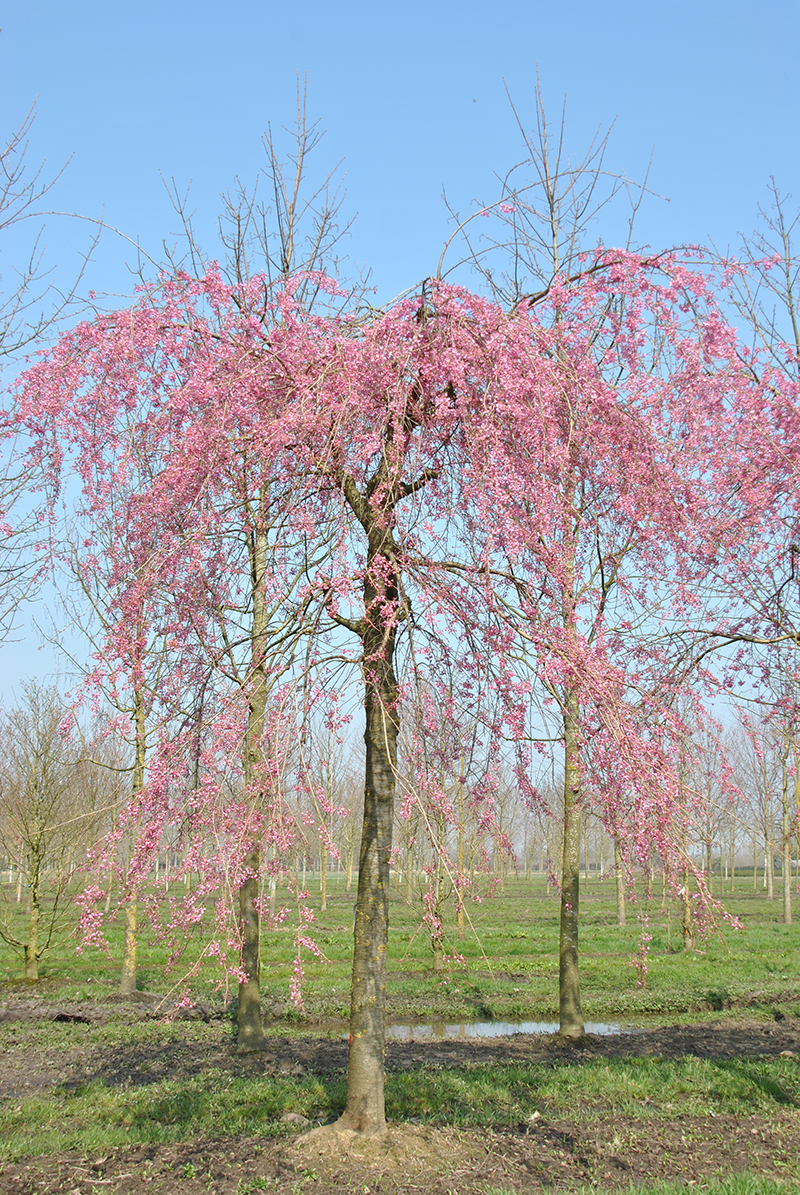
Prunus ×subhirtella 'Pendula Plena Rosea' Prunus ×subhirtella
Prunus subhirtella 'Pendula' Higan Cherry Rosaceae. Expand. Habitat. native to Japan; hardy in zone 5, and warmer parts of 4; Habit and Form. a medium deciduous tree; 20' to 40' tall with an almost equal spread; grafted at about 6' weeping habit;. 'Pendula' (also listed as var. pendula) - The most common cultivar, this popular tree is.
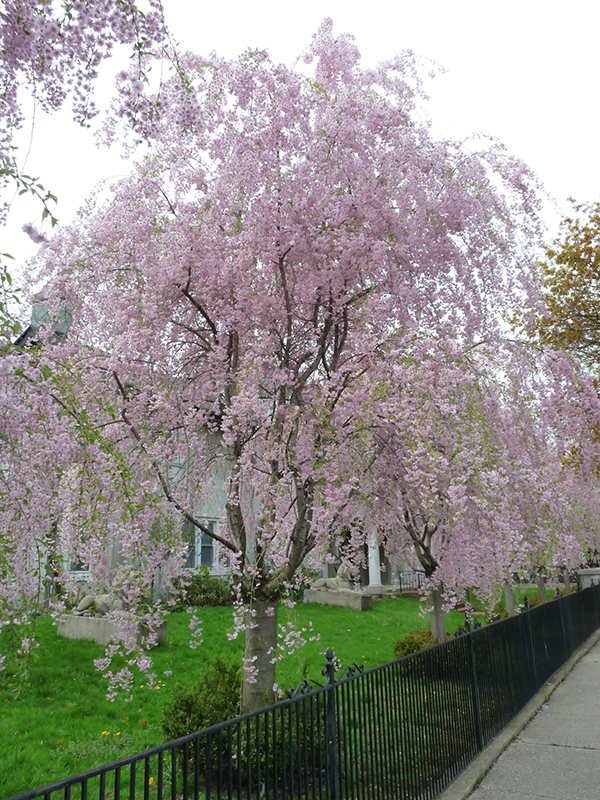
Weeping Higan Cherry (Prunus subhirtella 'Pendula') in Boston Hopkinton
Prunus × tama-clivorum Oohara, Seriz. & Wakab. Prunus × subhirtella, the winter-flowering cherry, [2] spring cherry, or rosebud cherry, [3] is the scientific name for the hybrid between Prunus itosakura and Prunus incisa. [4] [5] [6] It is a small deciduous flowering tree originating in Japan, but unknown in the wild.

Prunus subhirtella 'Pendula' Prunus subhirtella 'Pendula'.… Flickr
'Pendula Rosea' is a cultivar that typically grows 15-25' tall with a pronounced weeping form and light pink to rose-pink flowers. Nomenclature on this tree is a bit confusing. Many weeping cherries including the within cultivar may still be incorrectly sold as cultivars of Prunus x subhirtella.
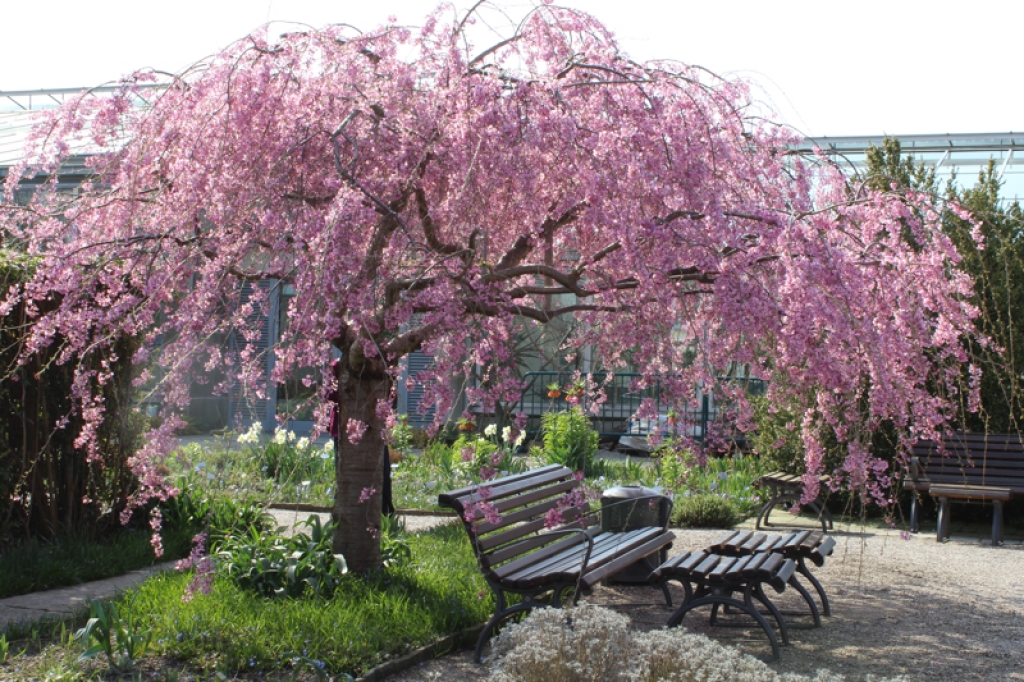
Prunus subhirtella ‘Pendula Rubra’ MaestroVerde. Vivaio di piante
The weeping Higan cherry has simple, alternate leaves with an ovate or ovate-oblong shape, serrate leaf margins, and pinnate venation. The tree is deciduous and the autumn leaf color is yellow or orange. In the spring the green leaves emerge shortly after the blossoms first appear. The leaves are about 2 to 4 inches long.

Prunus subhirtella Pendula Rosea YouTube
Prunus subhirtella 'Pendula'. Weeping Higan Cherry. medium-sized ornamental tree. maturing at up to 40' tall by 25' wide (but often smaller), and grafted onto a standard. pendulous oval growth habit in youth, becoming a pendulous mounding growth habit with maturity (like a single or multi-tiered umbrella) medium growth rate for its arching.
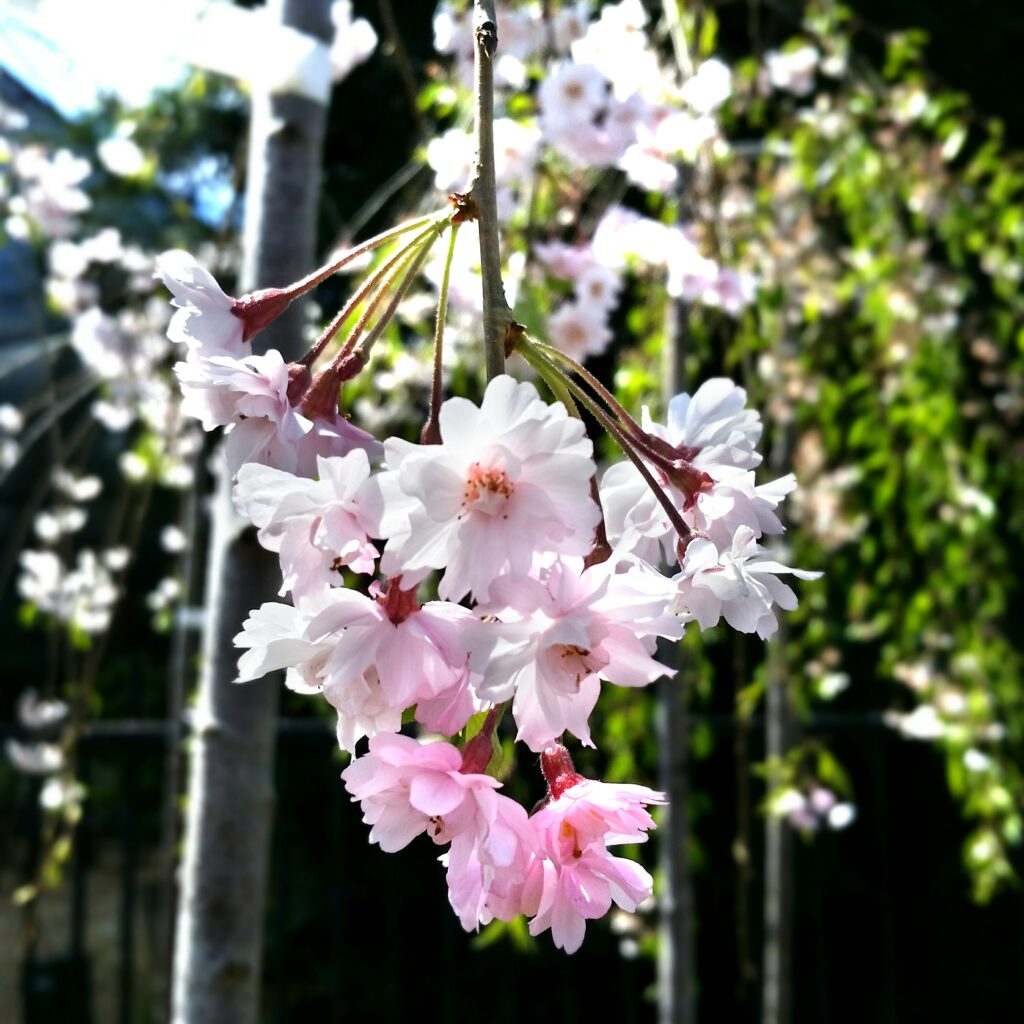
Prunus subhirtella 'Pendula' Weeping Cherry Mid Valley Trees
The Prunus subhirtella 'Pendula' also called Weeping Higan Cherry grows 20 to 30 feet tall and spreads 15 to 25 feet in a weeping habit. Leaves stay glossy green throughout the summer and into the fall when they turn a vivid yellow before leaving the tree bare in winter. The Weeping Higan Cherry blooms in the spring, having light pink (almost white) flowers that cover the branches before the.

Prunus subhirtella var. pendula (Weeping Cherry)
Deciduous tree, 15-20 ft (4.5-6 m), weeping, twiggy, slender whip-like branches, usually grafted about 5-6 ft to an understock. Leaves alternate, simple, ovate to oblong-ovate, 2.5-10 cm long. Flowers are single, pale pink, 13 mm wide, appear before leaves. Hardy to USDA Zone 5 Native to Japan; introduced into the US in about 1862.

Prunus subhirtella 'Pendula Rubra' Weeping Cherry Tree Ornamental
Weeping Higan Cherry (Prunus subhirtella 'Pendula'): This cultivar is grafted onto a straight understock reaching 25 to 30 feet high and 35 feet wide. The pendulous oval growth becomes more mounded with age. Clear pink flowers open before the leaves emerge. Find on the Map.

prunus subhirtella var. pendula Weeping Beauty Pinterest
Prunus subhirtella'Pendula' Figure 1. Mature Weeping Higan Cherry. Weeping Higan Cherry1 Edward F. Gilman and Dennis G. Watson2 INTRODUCTION Weeping Higan Cherry grows 20 to 30 feet tall and spreads 15 to 25 feet in a graceful weeping habit (Fig. 1). Leaves stay glossy green throughout the summer and into the fall when they turn a vivid